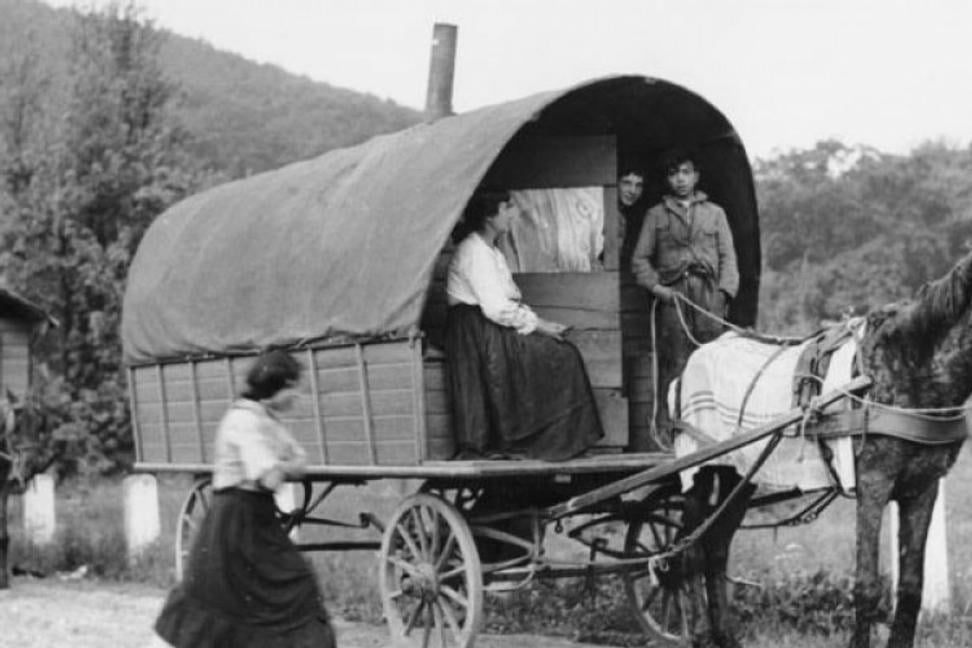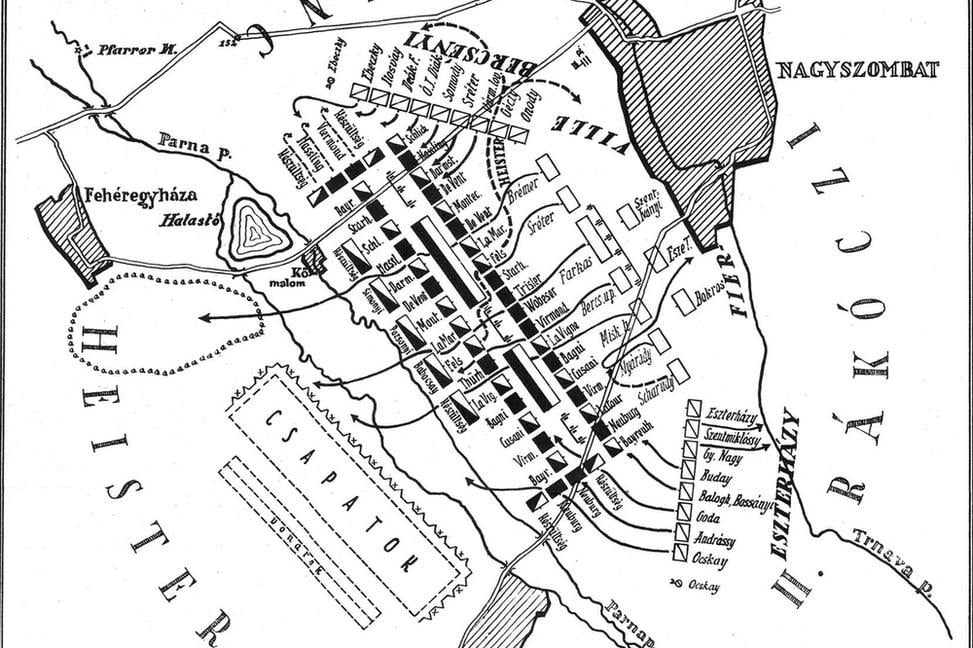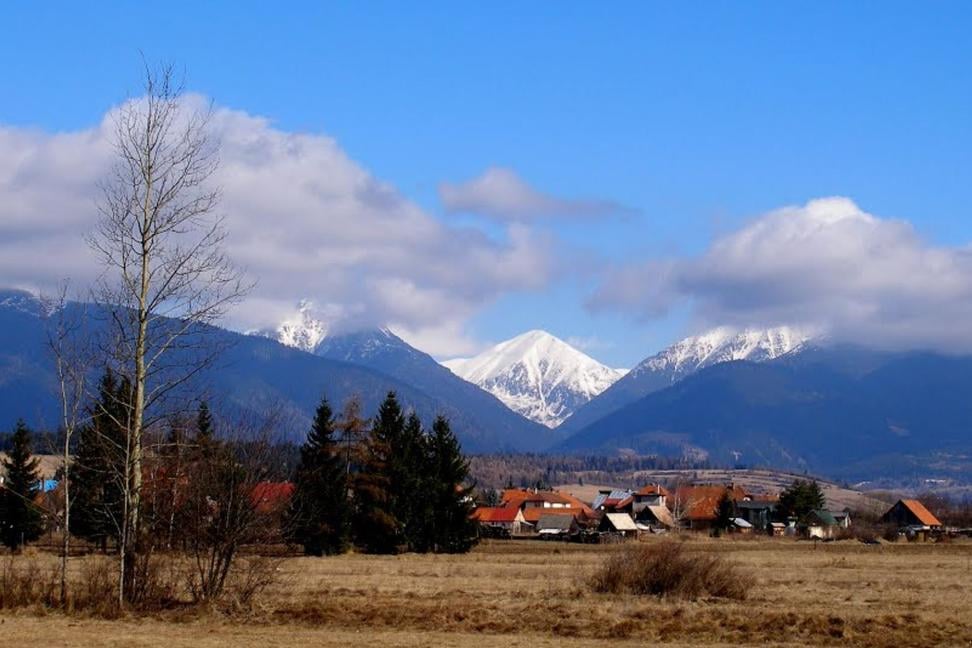We know that the First World War began on the night of the first to the second of September 1939 and that among the victims there are, as is well known, a minority of Jews. Another group of people - the Roma - also ended up among the victims. What was the initial reason why they began to persecute them and try to get rid of them?
The persecution of the Roma fit into the context of the Slovak state's racial measures, which were aimed primarily and primarily against the Jewish population. They were also directed against the Roma, but they did not reach such a fundamental level as in the case of the Jewish population. It was gradually deprived of property, the possibility of employment and finally they were deported to extermination camps. The measures against the Roma were also very hard and very strict. They may have differed according to individual cities, regions and depending on how active and how radical the local representatives were. But it is important to say that most of the measures that legislatively dealt with anti-Roma measures were adopted in the form of decrees and regulations. These were issued by individual ministries, most often by the Ministry of the Interior and the Ministry of the Economy.
In the book "Persecution of Roma in the Slovak Republic (1939 - 1945)", you mention 3 basic forms: the liquidation of their nomadism with the removal of dwellings from towns and villages, and the persecution of Roma in the army as the second phase. The third phase was the establishment of work units for Roma and the so-called antisocial persons. What were the individual phases specific and characteristic?
That monograph was published a long time ago. Further research has already been able to specify some things in more detail and maybe even better characterize them. One thing is certain - the persecution of the Roma can be divided into two basic periods in terms of time. The first period can be defined from the establishment of the Slovak Republic to the occupation of Slovakia by the German army after the outbreak and suppression of the uprising. In this period, all persecutory measures were carried out by the Slovak authorities under their own direction, including Slovak radicals united mostly around the Hlinka Guard.
After the occupation of Slovakia, the most radical elements came to power. The occupying army is also responsible for a large part of the persecutory measures directed against the Roma. But in no case do we go here and we do not want to make light of the activities of the Slovak authorities, because they bear a great deal of responsibility for almost all the measures that took place against the Roma even after the occupation of Slovakia. They also bear responsibility for everything that happened before the occupation. This means from the creation of the Slovak State until the summer of 1944 or the fall of 1944.
It is known that the Roma had to possess several permits or documents in order to be at least in the places reserved for them. What exactly was in them?
These are different things that cannot be generalized like this and must be specified. The first fundamental thing is that the regime of the Slovak state tried to remove the Roma from the city centers and from the main roads near their homes. That means they were mostly tearing each other down. They tried to move the Roma to remote places, mostly further away from the village. Here, perhaps, we can also look for the seeds of some of today's Roma settlements precisely in this brutal procedure, when those Roma dwellings were liquidated and when the Roma moved to remote places. But objectively, it must be said that some settlements existed long before. This issue will definitely require more in-depth field and archival research directly in the regions.
As for individual licenses, it should be remembered that part of the measures were formally directed against nomadic Roma. But here again it is clearly necessary to put things in perspective. The nomadic Roma were a very small and marginal group. The vast majority of Roma were settled, or semi-settled, who were used by moving around Slovakia in connection with their work. In these cases, the persecutory measures meant a rather fundamental limitation of the possibilities of livelihood of these Roma, who partly also made a living as horse traders, garbage dealers or as home craftsmen. So it became very strict there, and the decrees that were there, they fundamentally limited the possibilities of application.
In the Slovak state, the persecutions were relatively mild for some time compared to, for example, Germany. What and how did the persecutions on the territory of the Slovak State and Germany differ?
Extensive research is currently being carried out on the extent and comparisons of persecution measures, which compares not only Slovakia and Germany, but also other European countries where measures aimed at the Roma community have been adopted. However, it must be clearly said again that the issue concerning the Roma was not in any way interesting for the officials as well as others who in some way implemented the decrees. In contrast, for example, to those who dealt with the Jewish issue, where there was the possibility of getting rich during the persecution of Jews, arizonas and theft of Jewish property. The Roma were very poor during this period, so even this did not bring anything.
It must be said that the officials who were assigned to this job did not want to do it. So there weren't even enough workers for this agenda. That's one thing. The second thing is the attitude of the Slovak population towards the Roma and towards the Jewish population was also quite different. This can be seen when you study the minutes or reports of the district chiefs, because these were sent to the superior authorities at regular intervals. Of course, there were always local differences and the relations of the local population towards the Roma differed. With the exception of some radicals, who were always hostile towards them. It was actually more or less the initiative of the central authorities, especially the Ministry of the Interior, which issued most of the decrees. Implementation then varied locally.
Probably the most serious and harshest intervention against the Roma in the first years of the existence of the Slovak Republic was the forced deportation to labor units. There, Roma were used for the most difficult earthworks. They used them when building either railway lines or water works. The most famous ones, which are still in operation today and which we can say were created thanks to the contributions of this almost slave labor of the Roma, were the railway line Prešov - Strážske, the Dubnica and Ilava hydroelectric power plants, or in the later period the Oravská dam.
For example, Roma were not allowed to own dogs and sell alcoholic beverages in pubs. From an overall point of view, what could they not do and own and for what reasons?
This is a complex question and quite marginal in terms of persecutory measures. Much more serious measures were taken, especially forced deportation to labor units. Personal accounts and personal grudges were often settled with them. Part of the Roma men were forcibly sent to work units. who often could also have a job title. The decree that prohibited the ownership of dogs and that restricted some other activities belongs to the context of all those decrees that were adopted and that restricted the life of Roma.
However, it is necessary to look at it comprehensively. The Roma were often deprived of their homes, they were removed to areas outside the settlements, they were persecuted in the army, where, like the Jews, they could not serve with a weapon, but were assigned to work units. To the sixth work battalion. If I am not mistaken, the Roma were his twenty-fourth labor force.
It is therefore not possible to issue a single decree without comprehensively following all the decrees, which month after month cut off the free life of the Roma and the possibility of livelihood and made them a marginalized minority.
A detention camp with inhumane conditions was established in Dubnica nad Váhom. What did the Roma experience there? What were its distinguishing features?
It should be said that the work units were created since 1942, with the fact that even earlier there were two smaller work units. These work units, operating since 1942, were intended for Roma and antisocial persons. The hardest work was done in them. As we mentioned earlier, especially in the construction of railways or in the construction of dams. Only able-bodied men, who were designated for this work, were always sent to these work units. That is why there was also a part of people who were taken away as antisocial, but who were not Roma. In some camps, it was initially up to 50%, but later the share of Roma grew significantly.
They worked there on the most difficult earthworks.
They were accommodated in barracks guarded by the gendarmerie. They were often subjected to inhumane treatment, physical punishment and were robbed of the economic administration of these camps because they had to pay for everything. From clothing, food to the entire security, simply everything that was quasi-provided for them, in the end they had to pay for with deductions from their salary. What was left was sent to their families in their places of residence. Very often it also happened there that the local authorities, who were supposed to hand it over to them, robbed the Roma and did not give them everything that belonged to them.
Completely different conditions occurred in Dubnica in November 1944. On the site of the Dubnica labor department, no longer a labor camp, but a detention camp for Roma was established. The camp was no longer under the responsibility of the Ministry of the Interior, but under the administration of the Ministry of Defense. Whole families, including women and children, were taken to this camp, which was located exactly on the spot where the Roma used to work. The conditions in the camp were very difficult, inhumane, because no one expected that there would be approximately 700 Roma. The capacity, originally intended for 300 trainees, was exceeded many times over.
In an older monograph, which was published years ago, I also describe in detail the number of detainees and the location and number of individual barracks. I highly appreciate that one of the surviving Roma also gave me a map of the camp, which is part of this book.
After the change in the nature of the camp, the situation in it was completely different. The labor units were intended exclusively for able-bodied men, but entire families, including women and children, were placed in the detention camp. It brought huge problems - overcrowding of the camp, problems with hygiene and food security. Already in the first winter months, when the camp was established, we have the first cases of death, especially of small children and elderly people, who died of pneumonia, intestinal inflammation or general weakness. It is an absolute tragedy because those children and old people should never have been allowed into those camps. By getting there, they were subjected to such treatment that eventually resulted in their death. But the most serious problems came later, when typhus, a deadly disease, broke out in the camp.
Typhus literally paralyzed the camp because Slovak soldiers refused to perform guard duty and a rebellious mood arose in the camp. In the end, the Germans took over the guard duty. However, this must again be seen in a wider context. In Dubnica nad Váhom, not far from the camp, there was one of the largest armories that worked for the German army. It was a Škoda branch in Dubnica nad Váhom and provided the necessary technologies and weapons for the German army. Therefore, the Germans constantly protested against the existence of such a camp and often demanded that the Roma be killed. In the end, this crime partially happened. 26 Roma who were sick or suspected of having the disease were loaded onto a truck by the Germans under the pretext of taking them to Trenčín to a hospital and taken to the Dubnické Valley. There they were brutally murdered in a pre-prepared pit. The horror of this act is confirmed by several documents and testimonies, but especially the exhumation reports. They testify that many murdered Roma were not shot, but had broken bones. That means they were probably beaten with shovels and some suffocated alive in that pit.
Only 18 Roma had gunshot wounds. A 15-year-old boy and a woman seven months pregnant were also among the murdered. The camp continued to function for several weeks after this murder. When the front to Dubnica nad Váhom began to approach, gendarmes took over guarding from the soldiers of the Slovak army. They then ran away from the camp just before the front passed. The Roma who remained there fled before the arrival of the front. The camp was later burned down. Originally, there was almost nothing left of him. And what's even sadder, people from the surrounding villages completely looted it before burning it down.
Part of the Roma joined the resistance. How many were there? And what was their motivation to join?
At the moment, I cannot specify exactly how many of them were in the resistance. There is definitely still research going on there. The Museum of the Slovak National Uprising in Banská Bystrica could provide more detailed information. Well, we certainly know such cases, as well as cases of Roma who fought against the Germans with the 1st Czechoslovak Army Corps. However, they can still refine those numbers.
And the resistance and its causes? The goals were clear for all who participated in it, regardless of nationality, race or religion. This was a clear opposition to the regime of the Slovak state. Apart from the army, which was the main driver of the uprising and the fight against the German occupation power. Others dissatisfied with this regime either joined resistance groups or ended up in various partisan units, many including those of Roma origin who fought bravely.
How many Roma victims were there at the end of the Second World War?
There is no known number that would precisely specify the number of Roma victims in the book you quoted. So I write the exact number of victims that were known on the date the book was published. That is the exact number of people who ended up in mass graves or were murdered. But the exact number of Roma cannot be specified, because many of them ended up being executed together with other inhabitants or citizens of non-Roma origin. Later, the information was no longer available to specify exactly.
The issue of Roma persecution in Slovakia is a relatively unknown topic. For what reasons?
This is probably due to the fact that until 1989, research into the history of the Slovak state was not preferred in any way. In this period, very few historians dealt with the history of the Slovak state. At that time, the topic was not in any way preferred in terms of the allocation of state grants, contracts or orders for historical research.
After 1989, when free research began, the search for things that had a larger social order began. The regime of the Slovak state was addressed, the uprising, the role of communist and civil resistance, the economy, and international issues were reevaluated. And of course it was also the Holocaust. Persecution of the Jewish population and their extermination or deportation to extermination camps. So the most fundamental things were reinterpreted by scientists in order to get rid of the communist influence.
The Roma issue was never one of the priority issues and was not in the center of attention of Slovak historians. Ethnologists, political scientists and sociologists have mostly devoted themselves to this issue, but very few historians. Even that only marginally.
In Slovakia, we can thank Professor Ctibor Nečas from Masaryk University for the comprehensive and in-depth research. Back in the days of the former regime, he did extensive in-depth research in Slovak archives from eastern Slovakia to Bratislava. It was an exceptional feat when he examined and made available to the public the first fundamental information about the causes of the course and scope of the persecutions and measures directed against the Slovak Roma. The depth of his research is unsurpassed to this day, and his works must serve as basic literature for any researcher who would like to seriously address the issue of the persecution of the Slovak Roma.









